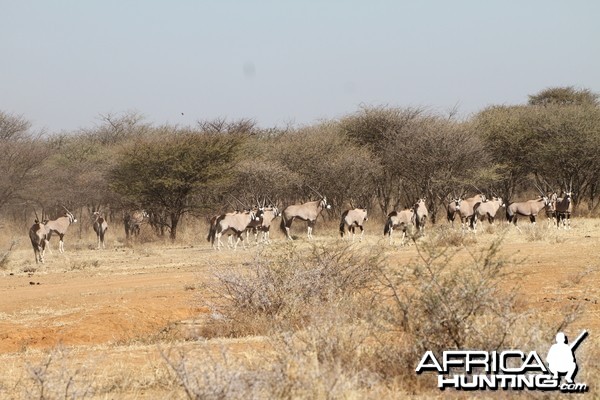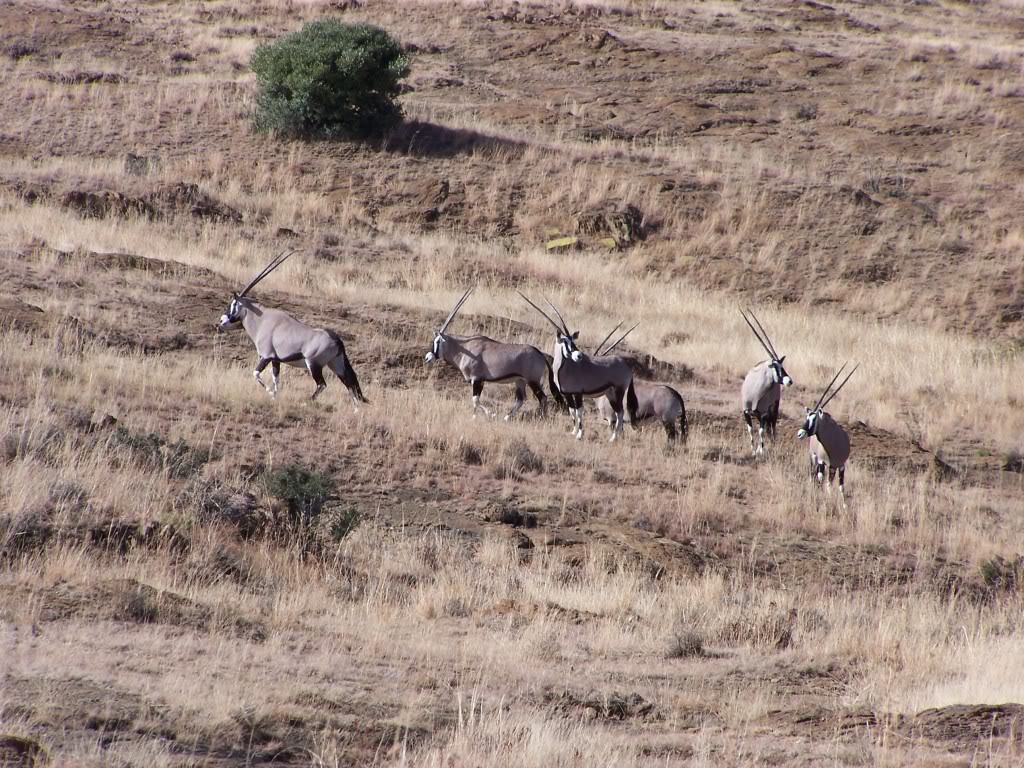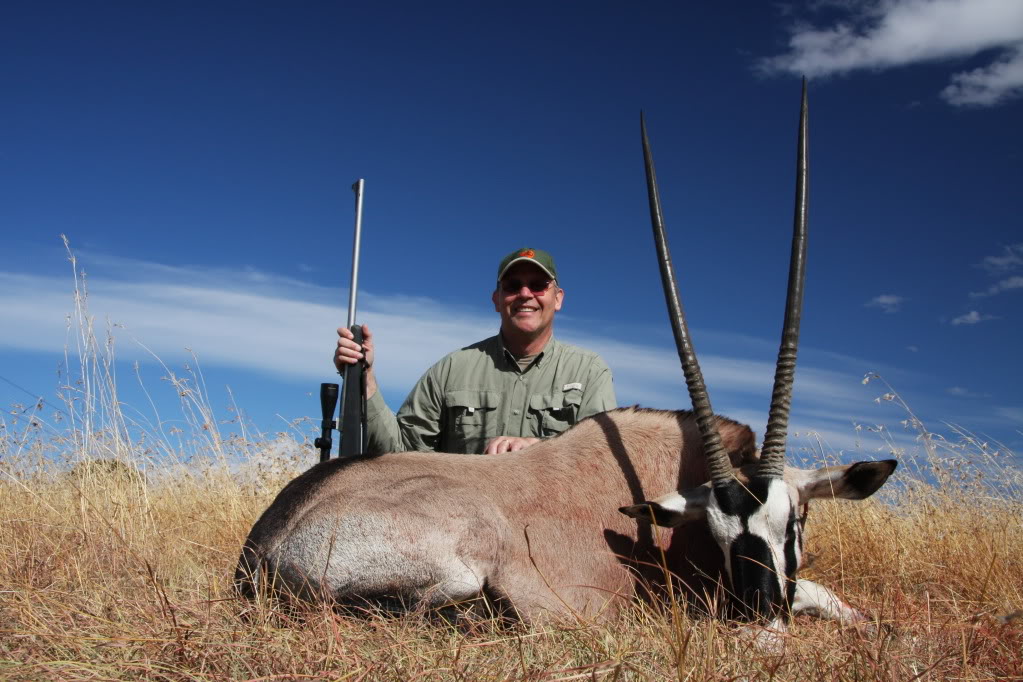Hunting Gemsbok / Oryx
Skyline is right, anything over 40 inches (101.6 cm - one meter) for a Gemsbok / Oryx bull is exceptional. In terms of trophy size, when it comes to mature Gemsbok / Oryx bulls, I would say that horns above 35.5 inches (90cm) make for an amazing trophy, horns above 31.5 inches (80cm) make for a great trophy, horns above 27.6 inches (70cm) make for a good trophy and horns below 27.6 inches (70cm) make for a beautiful trophy and great memories!
When discussing Gemsbok / Oryx horn measurement here, I refer to horn length for a Gemsbok / Oryx in it's simplest form which is taking the measurement of the longest horn from the base along the front of the horn to the tip only. This, of course, is a basic method but for a primer on
How To Measure Your Trophies you can read AfricaHunting.com article by clicking
here.
The longer the horns of the bull and the more spread apart the ridges are the more the Gemsbok / Oryx is in it's prime size wise. The more the ridges are the close together and the shorter the horns are the older the Gemsbok / Oryx is. Really old Gemsbok / Oryx will have the ridges gather up so much that they fuse together in one solid mass. Gemsbok / Oryx horns on the way down will often gain mass at the top and usually one horn is shorter than the other.
I included a few Gemsbok trophy photos all of which came from my place in Namibia,
Ozondjahe Hunting Safaris. I included numbers for each picture if anyone wanted to comment or refer to an image... Length measurement only taken from the longest horn.
01. Gemsbuk / Oryx Male 39.5 inches exceptional trophy
02. Gemsbuk / Oryx Male 36.5 inches a truly beautiful trophy
though has not reached his prime yet
03. Gemsbuk / Oryx Male 36 inches a perfect mature bull with
thickness through the length of the horns and has been loosing
horn length, the perfect if you want it all, an old, thick, long
horned bull
04. Gemsbuk / Oryx Male30 inches a great old bull, a trophy
any hunter should admire and respect
Females Gemsbok / Oryx will usually have thinner horns all the way from the base to the top. Female horns have a tendency to get a bit wavy towards the top. They are hunted very seldomly and usually only if their horns are exceptionally long.
05. Gemsbuk / Oryx Female over 41 inches
Every Professional Hunters will have his own method of preference when it comes to gaging Gemsbok / Oryx horn length... Here are a few.
Face length about 15 inches (38.1 cm), then estimate horn length based upon the face as a reference.
Ear length in relaxed position about 6 to 7 inches (15.24 to 17.78 cm), then estimate horn length based upon the ear as a reference.
06. Horn size estimate according to 15 inch face 30 inches
While grazing, horns extending above the back line with the head down.
07. Horn size estimate according to 15 inch face 37 inches (if the horns
were just reaching the top of the shoulder it would make 30 inches)
While drinking at a waterhole on firm soil, horns level with the back line with the head down. If the front hoofs are in the water or sunk in the mud, this can completely throw off this method.
08. Horn size estimate according to 15 inch face 27.5 inches
(closer Gemsbok) and 35 inches (further Gemsbok)
While head is back, horns reaches the base of the tail.
09. Horn size estimate according to 15 inch face 35 inches
Using
Rowland Ward Methods Of Measurement for species with unbranched and uncurled horns (Method 7) does require taking the spread measurement from horn to horn into account. However, using
Safari Club International Methods Of Measurement for most animals with simple horns (Method 1) does NOT require taking the spread measurement into account.






